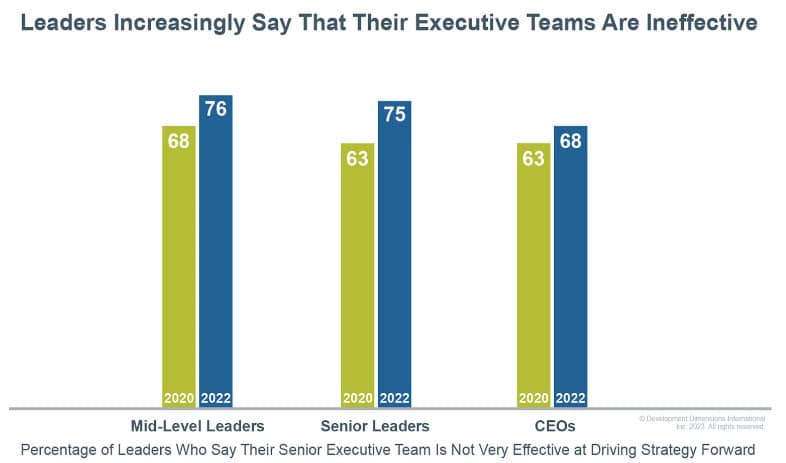Discover leadership from the DDI report

Ever since I was a child, I have always been interested in the concept of leadership and the figures who could be defined as leaders.
I was fascinated by the leader as a figure, in all its forms, not just the professional one. Over time, I have delved deeper into the subject, which has become increasingly topical and of general interest. And scientific research on the subject increased year by year.
Today we have arrived at a situation where it is known to everyone that for the best long-term development of companies, it is necessary to be able to choose and cultivate future leaders. For example, the research ‘Developing your leadership pipeline’ conducted in 2003 shows that some companies have succeeded in creating long-term processes for talent management and development in their organisations. The reason they have reached this goal is because they have effectively combined two practices together, such as succession planning and leadership development.
Twenty years have passed since that research published in the Harvard Business Review and the situation today does not seem to have improved as one might have initially imagined. Every organisation will need to replace its CEO, but most businesses are not well-prepared for this process. The boards are not ready for succession and this planning required years, not months.
Through the ‘CEO Leadership Report 2023’, one can try to better understand this overly sensitive issue. In the study conducted by Development Dimensions International (DDI), there is one particularly important fact: more than ten industries were analysed. This shows that the problem is real and widespread.
To better understand the report and its related issues, we will ask Dr. Matt Paese, Senior Vice President of Leadership Insights at DDI, some questions about it.
The first aspect is about the fact that, from the DDI report, only 12% of companies report having a strong bench of leaders ready to step up and manage complex challenges. How should this figure be interpreted? What strategies should companies and their boards of directors consider?
“Over the past decade, we’ve seen an alarming decline in leadership bench strength. The pandemic exacerbated this shortage as the Great Resignation wiped out many companies’ talent pools. But in all honesty, we are not shocked by these shortages. We have seen leadership become far more challenging in today’s chaotic world, and it’s no surprise to see organizations struggling to prepare leaders to meet the challenge.
What we do find unfortunate is that so few companies understand that this is a solvable dilemma. Companies who invest in strengthening their bench are much more agile and prepared to meet emerging business challenges. Our research found companies with strong leadership benches are 3X more likely to be financially top-performing organizations and 6X more likely to be capable of engaging and retaining top talent.
In a tight labour market, executives and boards need to recognize that the best bet is to source leadership talent internally. This means proactively planning for future talent needs and dynamically defining the skills required for critical roles. This creates both process and a culture that allows organizations to surface high-potential talent earlier and begin developing future leaders at the lowest levels of the organization.”
According to the report, 36% of CEOs say that their organisations support and encourage flexible work. Leaders are nearly 5X more likely to say that they trust their senior leaders when flexible work is accepted and encouraged. In comparison to organisations without flexible work, leaders are 2.9X more likely to think highly of their senior leaders. Additionally, CEOs who support flexible work reported being better equipped to manage some of the most difficult problems that businesses face. Why are some companies taking away flexible and remote working?
“There’s a perception among many CEOs that company culture must be physical and is difficult to define in a virtual setting. On top of that, some CEOs fear a loss of collaboration and productivity with remote work (despite many employees reporting they’re more productive working from home). Another factor at play is CEOs’ lack of confidence in their ability to lead remotely: our data shows only 27% of leaders say they are very effective at leading hybrid or virtual teams.
Yet, as you highlighted, the benefits of flexible work are clear. By embracing a flexible work strategy, CEOs can cultivate a culture built on trust and win the talent war.”
68% of CEOs say their executive team is not very effective at driving strategy forward. This value is increased: in 2020 it was 63%. How can this deterioration be explained? What actions should be taken within companies?
“In the height of the pandemic, we saw many companies operating in “crisis mode”, and crisis creates clarity. Leaders quickly attach to urgent, short-term goals, and this leads to a sense of unity and progress. But coming out of the pandemic, CEOs and their teams have set their sights forward again, where the landscape is more competitive and uncertain. Many executive teams are struggling to adapt to this velocity because they’re operating as high-performing individuals rather than as a cohesive team. This can quickly lead to misalignment and stalled execution.
This is an area where CEOs need strong coaching from their CHROs. Managing team effectiveness is a skill with which many CEOs struggle. Experience and habit teach most executives, CEOs included, to default to their own individual contributions, so they often need to be shown how effort to improve team effectiveness can impact business success. This means using data and evidence to make the link between critical team skills like trust and vulnerability with execution efficiency and bottom-line performance. Those links are real, but without the right talent data, executives tend to overestimate the performance of their leaders and their key initiatives, causing them to become out of touch with their employees. Executive teams set the tone for collaboration and change management across the organization, so modelling flexible, team-oriented behaviour is critical.”
One of the most surprising data concerns the fact that about 20% of rising CEOs did not expect their promotion to the role. Why were these promotions unexpected? What selection process is followed? Do these unexpected CEOs act differently from those who anticipated their promotion?
“Unexpected doesn’t necessarily mean that it was completely out of the blue. Rather, in these situations, the chosen CEO successor was probably part of a pool of candidates who could potentially get the role, rather than an “heir apparent” who had been assumed to get the role as part of a long process.
Most of the time, these unexpected successions happen because the company had a more robust succession planning system in place that emphasized the longer-range development of multiple succession contenders. These more planful organizations were 2.8X more likely to use assessments to gather data about leader readiness and forecast future talent needs.
Our data suggests taking this approach may also help increase the diversity of CEOs. On average, unexpected CEOs were 1.8X more likely to be a woman and 1.6X more likely to be from a diverse racial/ethnic background than those who expected the promotion. Unexpected CEOs may also bring unique personality traits to the role – in our data, they tended to be more modest, rating themselves lower than their peers in extroversion and ambition. These traits could translate into stronger relationships built on empathy and vulnerability, as leaders in organizations with unexpected CEOs were 1.6X more likely to say they trust senior leadership.”
The report is strongly detailed and full of things to consider. Probably a perfect strategy does not exist, and the context has to be analysed on a case-by-case basis. But it certainly helps to understand what the common critical points are in order to be able to deal with them in the best possible way.
I would like to ask you the last two questions. They are probably the most frequently asked questions.
Which strategy should you choose: hire an external CEO or promote an internal one?
“As a general rule, companies face less risk when promoting CEOs from within. When succession is approached as a continuous, ongoing process of developing successors, the need to look outside may never arise. And this is an advantage since looking externally increases the risk of failure due to lack of familiarity with people, strategies and/or culture. Some boards feel compelled to bring in an external CEO when major change is needed, or because they have an urgent need and no viable options internally.
The biggest risk to CEO succession planning is to think there’s a start and end date. Rather than trying to anticipate when you’ll need to have a new CEO in place, companies should establish permanent, ongoing succession processes. When boards and CEOs shift their mindset in this way, they’re much more likely to find the best talent for the job internally.”
Are leaders born or are they made?
“At DDI, we believe there’s a leader in every person, and our research shows that the right development in the right moments can bring those leadership qualities to the forefront when they’re needed, creating better performance and better workplaces. At the same time, we also realize that leadership isn’t for everyone. Some people are happier in individual contributor roles, and the success of leaders hinges on having a genuine desire to engage, motivate and guide teams. That said, becoming an effective leader requires development. Every leader at every level needs support to cultivate the right skills and develop enough self-awareness to understand how their unique style impacts their organization.”
Have you read?
Here Are 29 Inspirational Women CEOs Making An Impact, 2023.
Countries With The Most Billionaires, 2023.
The Exclusive $100 Billion Club (And How They Made Their Fortune).
Africa’s Billionaires 2023: Who Are the Richest People in Africa?
The 10 Female CEOs in FTSE 100 companies in the United Kingdom, 2023.
Add CEOWORLD magazine to your Google News feed.
Follow CEOWORLD magazine headlines on: Google News, LinkedIn, Twitter, and Facebook.
This report/news/ranking/statistics has been prepared only for general guidance on matters of interest and does not constitute professional advice. You should not act upon the information contained in this publication without obtaining specific professional advice. No representation or warranty (express or implied) is given as to the accuracy or completeness of the information contained in this publication, and, to the extent permitted by law, CEOWORLD magazine does not accept or assume any liability, responsibility or duty of care for any consequences of you or anyone else acting, or refraining to act, in reliance on the information contained in this publication or for any decision based on it.
Copyright 2024 The CEOWORLD magazine. All rights reserved. This material (and any extract from it) must not be copied, redistributed or placed on any website, without CEOWORLD magazine' prior written consent. For media queries, please contact: info@ceoworld.biz
SUBSCRIBE NEWSLETTER









